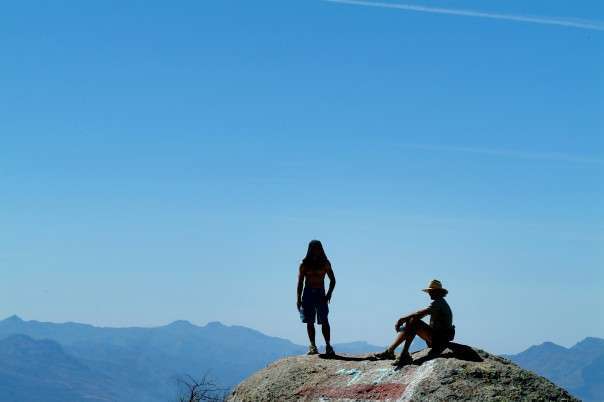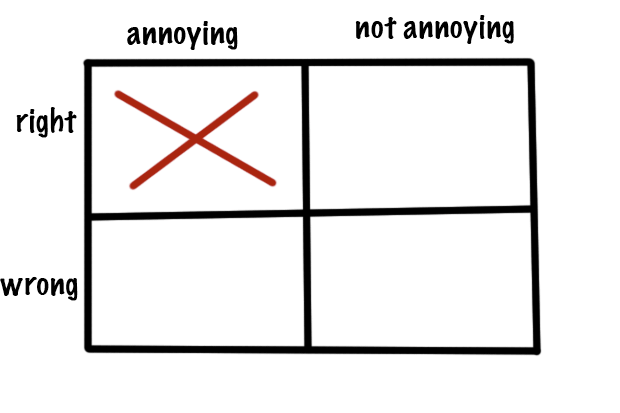Born to Run: Book Review and Summary
I’m training for a half-marathon. As someone not terribly athletically gifted, it’s been slow-going. Since I was going to spend the 4th of July weekend on the beach, electronically-secluded, I picked up a dead-tree copy of the book, Born to Run.
I’ve seen a lot of people transformed into, well, the sort of runners that run with religious fervor after reading this book and I thought, hey, if it worked for them, maybe it’d work for me.
Long-time readers will note that this is far from my first post on reading, although I don’t have copious direct quotes, like I’ve had in the past. I plan for this to be the first in a very long tradition of reviewing books, so stay tuned for more.
A brief summary of Born to Run
Born to Run’s sub-heading is “A Hidden Tribe, Superathletes, and the Greatest Race the World Has Never Seen” and, as a rare example of truth in advertising, this is sorta what the book is about.
The book documents Christopher McDougall’s (the author) fascination with ultramarathoning — you know, those, uh, eccentric individuals who aren’t content to run marathons, and instead run 50 or even 100 mile races, the equivalent of four back to back marathons.
These are the superathletes mentioned in “A Hidden Tribe, Superathletes, and the Greatest Race the World Has Never Seen” — distinguished ultramarathoners like Micah True and Scott Jurek.
And then there’s the hidden tribe part. The author’s ultramarathoning fetish leads him to a semi-mystical people known as the Tarahumara, a Native American people who live in the sheltered depths of Northwestern Mexico. And they drink pinole, which is like water and toasted corn. Which the author thinks is oh-my-god-so-amazing. But I’m pretty sure there’s a reason it hasn’t caught on in the United States and that reason is that it tastes horrible.
What’s most notable about the Tarahumara is that they’ve developed a culture around ultrarunning, sometimes running more than 200 miles in one session. Or like 7.6 back to back marathons. Oh, and did I mention that hallucinations are extremely common among ultramarathons during a race? Yeah. The Tarahumara’s name for themselves, Rarámuri, even translates to “those who run fast.”
This tradition, plus the mysterious and insular nature of the Tarahumara, well, it was Scarlett-Johansson-level-irresistible to Christopher McDougall, so he decided to track the people down.
Except they didn’t want anything to do with him.
So Chris hunts down this other dude, Caballo Blanco aka Micah True, who tells him that he’s trying to organize a race. And not just any race. He’s going to organize a race between these reclusive Native American runners and the best American ultrarunners.
Oh, and Chris is going to run it, too. Gonzo-style, he’s going to insert himself into the action and then write it up.
This is mostly what the book is about, plus:
Descriptions of past races Tarahumara have run against outsiders
Gratuitous ranting against “big footwear” and how barefoot running is divine truth
And a chapter on persistence hunting — chasing something down until it collapses from exhaustion — and how humans were literally born to run (and our running ability explains our evolutionary success, and maybe even math, but prahhhhhhh-bably not, if you ask me)
Born to Run Book Review
Endurance running hypothesis
I found, and this is reveals more about me than about the book, the chapter on human evolution and the role that running played in our collective success to be the most interesting.
The author argues, fairly persuasively, that humans — you and me — were born to run. That running is our birthright. That humans are to running as rabbits are to hopping.
The basic idea is that humans are more efficient at cooling off than, say, antelope and even cheetahs. We may not be as fast as either, but we can maintain a fast enough pace for a long enough time that humans can run animals to death. They’re sprinters. We’re marathoners.
This is the reason, the author argues, that humans out-competed neanderthals and why leaving the trees and standing tall was an advantage. The book even makes the point that the only reason that marathon running is so popular is because it’s hardwired into humans — recreation reveals something about the ancestral environment, basically.
This notion that we humans succeeded because of our endurance has been dubbed “the endurance running hypothesis.”
Now, whether this is true, I have some doubts. Certainly humans are capable of persistence hunting but, as far as I can tell, very few extant primitive peoples actually do any persistence hunting, instead preferring to farm, forage, or hunt-without-running-stuff-to-death. Maybe this is a side-effect of modernity, I don’t know.
However, even if early humans didn’t race deer until the deer collapsed, it still sounds pretty reasonable to posit that humans would jog from place to place. This is what we see, as far as I know, in some African countries.
So, altogether, I suspect the notion that running is a human universal and core part of our shared identity is more true than false.
Barefoot running
Parts of the book read like an extended advertisement for barefoot running — except I’m not sure what there is to sell about barefoot running. Maybe the author is short Nike stock or something.
But, really, these are the most distracting and annoying bits of the book. The author has found religion, and it’s barefoot running. Okay. I got it the first time. Maybe he could have mentioned it twice. Twice is alright. Maybe someone missed it the first time.
Or, hell, just break the barefoot running bits into their own chapter. That might be okay, too, but, as it is, it’s just scattered throughout the text, and not very subtle either. Like if some star athlete enters the narrative, you know how you’re going to know that he doesn’t wear shoes? Or that he suffered literally worse than Hitler level injuries and then switched to barefoot and oh-my-god, they’ve disappeared? Don’t worry, ‘cos the author’s going to tell you.
But, I mean, maybe the guy has a point — shouldn’t we have a strong prior that evolution didn’t mess up something as basic as feet? It seems reasonable to me, except that now we walk on concrete, which isn’t present in the ancestral environment. But that’s not really strong counter-evidence because, as far as I know, we don’t have any evidence that shoes are that great. Plus I think we should have a pretty fucking serious barefoot prior.
So even if we did have evidence for shoes, we should still be like, “Yeah, but evolution. Checkmate, shoe-wearers.”
So maybe the author is right, but this is still the most annoying part of the book.
Positive stuff
The book is very well-written. I don’t know how much you can really say about a 100-mile race, but the author manages to make the sections describing ultra-marathons not only entertaining, but compelling — who’s going to win? Will they get injured, or not?
In fact, the author sometimes pushes too far in that direction, to the point where I have to expect exaggeration: was so-and-so really that attractive? Or is Mexico really that dangerous?
But, on the whole, the author’s enthusiasm for the sport is infectious, and I find myself with something new that I’d like to do before death takes me: run an ultramarathon. (But, given that I can barely run for 5 minutes without stopping, it’s going to be a while.)
Should you read this book?
There are a few groups of people that I feel confident recommending this to. You should read this book if:
- You’re already someone who self-identifies as a runner.
- You would like to be more enthusiastic about running.
- You don’t have a regular exercise routine.
Originally, I was going to just recommend this to people in the first two groups but, on reflection, those in the last group have the most potential upside. Maybe you get hooked on running and, as a result, you don’t get heart disease. That seems like a pretty big win. Exercise in general is a big win, and maybe you’re just not inspired. Sounds reasonable. Maybe this book is the one that sets you on your Destined Path as an ultramarathoner.
Hell, the first time I realized that I could be an active person was while reading a biography of Bobby Fischer, of all people, who was apparently quite the sportsman, you know, physically, as well as on the chessboard.
Those are the people who will really benefit from reading this. Or maybe if you’re one of those people who enjoys the writing style that is best-selling non-fiction. I don’t know who you are, but I know you’re out there.
I mean, as far as I’m concerned, the book was a good purchase: the tips I picked up on proper running posture were worth the sticker price alone. The entertainment, additional enthusiasm for the sport, and interesting facts were really just surplus value after that.
So, if you want to pick up a copy, or read more reviews, check it out on Amazon.


